It has been several weeks since I last posted in this space - while I could apologize for the hiatus, I actually believe that one should only write when they have something to say - I do not believe in content simply for the sake of content (call that the Disney model). Events on the ground in Ukraine have been subdued for the past few weeks. This, so far at least, is in keeping with the predictions I made in previous posts that the front would stabilize towards the end of October as Ukraine’s offensive capability degraded and Russian reserves began to enter the theater. We’ll talk on that more in a bit - the real impetus for writing now is to take stock of some of the agitation (both nuclear and conventional) that has occurred in recent weeks and discuss the risks of escalation, with some other minutia and tangential content thrown in.
Straight off the top, I will state that my overall view of the war’s trajectory remains the same. I do not believe nuclear use is likely, and I do not believe outside actors will formally enter the war on behalf of Ukraine. I still think that direct kinetic action will remain contained to the conventional war between Russia and Ukraine, with western support remaining confined to armaments, command and control assistance, intelligence sharing, and economic measures against Russia. NATO personnel are certainly on the ground in Ukraine, but operating in a “volunteer” or informal capacity to keep the veneer of plausible deniability. This veneer will remain intact, and preclude the formal deployment of NATO units to the battlefield.
While I remain attached to this conventional sketch of the war and do not anticipate the conflict to escalate out of control, the nuclear talk is certainly concerning enough to merit a bit of a think - so let’s take a look.
Signifying Nothing
One of the idiosyncrasies of the discourse in the age of the internet is the great difficulty involved in trying to keep timelines straight. I presume this is because the digital space makes information available simultaneously, creating a sort of temporal distortion for the reader. All that is simply to say that it might be useful to hammer out a timeline of events (or really, statements) to figure out how we ended up with nuclear use talk circulating.
The beginning of all this was a September 30th speech by Putin in which he pledged to defend Russia - including the four newly reunited oblasts - using any necessary methods. He did not explicitly use the world nuclear, but this was clearly implied in the scope of his expression “all the forces and resources we have.” This statement amounts to little more than a restatement of Russia’s nuclear use doctrine, which is well understood and a matter of public record.
Russia’s nuclear use doctrine has actually narrowed over time. A previous articulation of the doctrine, promulgated in 2000, stipulated that nuclear weapons could be used in situations “critical to the National Security of Russia” - a very open ended requirement that really places no restrictions at all, given the track record of great powers defining all manner of sundry minutia as critical matters of national security.
The newer version of the nuclear use doctrine, revised in 2010, is more narrow and reads as follows:
Russia reserves the right to utilize nuclear weapons in response to the utilization of nuclear and other types of weapons of mass destruction against it and (or) its allies, and also in the event of aggression against the Russian Federation involving the use of conventional weapons when the very existence of the state is under threat.
It is the last sentence that is the most important. This can be read fairly simply: Russia may use nuclear weapons to avoid losing a conventional war with existential stakes. A 2020 memorandum titled “On Basic Principles of State Policy of the Russian Federation on Nuclear Deterrence” articulated this further, and clarified that Russia’s nuclear deterrence:
“is aimed at maintaining the nuclear forces potential at the level sufficient for nuclear deterrence, and guarantees protection of national sovereignty and territorial integrity of the State.”
The use case is fairly straightforward. Nuclear use would be authorized in cases where Russia is losing a war that threatens to either destroy the state or strip its territories. Putin’s statement is entirely consistent with this and does not reflect any sort of revision or escalation of Russia’s approach to nuclear weapons - his statement represents little more than a reminder that Kherson, Zaporozhia, Donetsk, and Lugansk Oblasts are now, in the eyes of the state, subject to that territorial integrity clause. It does not raise the prospect of nuclear weapons use unless Russia was irretrievably losing the conventional war.
This, of course, did not stop western media from spinning Putin’s statements as a “threat” to use nuclear weapons. The narrative that Putin was making threats almost immediately prompted people to put words in his mouth and deduce that he was intimating at the use of a tactical nuclear weapon in Ukraine.
Tactical nuclear weapons tend to be a bit of an obfuscation. Alternatively termed battlefield nukes, or simply nonstrategic nuclear weapons, all this really means is a lower yield nuclear weapon deployed against the enemy’s conventional military assets and bases. Furthermore, that term - “lower yield” - is highly relative. A nonstrategic warhead these days may pack a blast yield of between 10 and 50 kilotons - nothing compared to modern strategic weapons (the American B83 clocks in at 1,200 kt), but still in the range, if not higher, than the bombs that destroyed Nagasaki and Hiroshima, which came in at around 15-20.
In short, a “tactical nuke” is still an unbelievably destructive weapon, but it sounds just benign enough for people to believe that Russia might actually try it. This is just silly. To begin with, nobody on the Russian side made reference to nonstrategic weapons - the entire concept is a western interpolation. Using low yield nuclear weapons would be more than just counterproductive, it would completely smash important elements of Putin’s overarching political framework for the war. Russia aims to retain the support of key Eurasian powers like China and India, keep the United States and NATO from becoming directly involved in the Ukraine War, and maintain the attritive tempo of the war by preventing the transfer of weapons like ATACMs to Ukraine. Deploying a tactical nuclear weapon would shatter all these objectives. It also strains credulity to presume that Russia, which began the war with a very light hand, sparing critical infrastructure at the onset and generally handling the Ukrainians gently, would skip multiple escalation rungs and resort directly to a very blunt instrument.
The question of Russian nuclear use dovetailed with newer claims (which really accelerated in the last week) that Ukraine plans to detonate a dirty bomb, which would then be blamed on Russia as a pretense to bring the west directly into the conflict. Ukraine has countered with that most classic of argumentative devices: “No, you.” A dirty bomb is a very different sort of device from a nuclear weapon. Whereas a nuclear warhead uses nuclear fission to generate explosive energy, a dirty bomb uses a conventional explosive device to spread radioactive material. A nuclear bomb generates tremendous explosive power, of which radioactivity is a byproduct - a dirty bomb has conventional explosive power, with the spread radioactive contamination as the intentional effect.
I do not believe a dirty bomb will be detonated in Ukraine.
Russia will not use a dirty bomb because there is absolutely no reason to do so. A dirty bomb lacks the direct explosive power of a nuclear weapon - the only thing it does that a conventional weapon does not is to spread radioactive material, poisoning the landscape and the people. This, very simply, has little to no military utility for Russia (and even military downside because it irradiates the battlefield) while bearing the same political downside as a tactical nuclear weapon: collapse of global support for Russia and NATO intervention.
That leaves only Ukraine itself, and in this case we are asked to believe that Ukraine would irradiate its own territory simply to try and bluff NATO into entering the war on its side. However, with NATO more or less running the Ukrainian state at this point, this amounts to claiming that NATO itself is seeking to use a dirty bomb as a false flag so that it can enter the war.
Phew. Lots going on, clearly.
Let’s take a step back and look at the broader context - using the destruction of the Nordstream Pipeline as a lodestar. The thing that was perhaps the most striking about the pipeline explosion was the fact that nobody really reacted to it. Of course, words and accusations were thrown both directions, but there was no discernable shift either from the west or from Russia in their handling of the situation. That the destruction of the pipeline was simply tolerated is strong evidence of a mutual commitment to avoid escalation. Compare this to the terrorist attack on the Kerch Bridge, which prompted a ferocious punitive barrage by Russia and intensified strikes on Ukraine’s energy grid.
Both Russia and NATO have shown a strong desire to keep the conflict quarantined to the Ukrainian theater at an acceptable intensity, and it seems they are determined to stay the course as nuclear rumors have gained intensity. Significantly, Russian Defense Minister Shoygu had a phone conversation with his American counterpart Lloyd Austin, after which the US government stated that it has seen no evidence that Russia intends to use nuclear weaponry. Putin followed up on this with his own statement that Russia has no plans to use nuclear weapons and that it would make neither military nor political sense to do so.
My broad understanding of all this is that the narrative got away from the parties involved. Putin reiterated Russia’s established nuclear use doctrine, which prompted a media spiral in the west that created a Russian “nuclear threat” whole cloth, before both parties began a climbdown. A nuclear incident would benefit nobody. Both NATO and Russia possess the ability to escalate without irradiating the Ukrainian steppe, and both parties would like the situation to remain controlled.
In the end, while the idea of nuclear war should always be taken seriously, the idea that a mushroom cloud is soon to rise over Kiev was, as Macbeth said, “a tale told by an idiot, full of sound and fury, signifying nothing.”
Force Generation and Order of Battle
Let us shift gears from the nuclear realm back to the conventional, and talk about two different force deployments to Ukraine - one fictional, and one that is occurring right now.
One cause of alarm recently was the news that units from the famed 101st Airborne Division had been deployed to Romania, just miles from the Ukrainian border. Imaginations ran wild and concluded that the “Screaming Eagles” were going to cross the border and start World War Three. Putting aside the fact that this is only a partial deployment that was planned months ago, the idea that the USA could get involved in the war this quickly is a bit detached from reality.
It actually takes a huge amount of effort to start a war. The infrastructure and logistics that need to be in place are truly enormous. Military rear areas and logistics are more complicated and involved than people commonly understand - from ammo dumps, to fuel and vehicle depots, to command and control infrastructure, to the truck and air lifts that connect it all. This is to say nothing of the need to stage the requisite number of troops to actually achieve something. None of this occurs overnight, or even in secret. Military buildups are highly visible, and have to be obfuscated with diplomatic uncertainty.
US deployment to Saudi Arabia began in August 1990, a full six months before the ground campaign in Operation Desert Storm actually got underway. For the second American invasion of Iraq in 2003, the buildup similarly took months. In the case of the current Russo-Ukrainian War, Russia’s military staging began fully a year before the shooting started (I told some friends in June 2021 that Russia was going to attempt to annex everything east of the Dnieper).
The deployment of airborne units (and not even the entire division) to Romania simply does not constitute anything like the buildup needed for the United States to enter the war. These are not meaningful force deployment levels, nor do they have the infrastructure in place to support them. We’re instead seeing a fairly mundane show the flag exercise, of the sort that occur with regularity around the world and which virtually never precipitate war.
But while we’re on the subject of force generation and deployment, I thought it might be apropos to talk about the Russian mobilization and force structure, and discuss an idiosyncrasy of the Russian military - the Battalion Tactical Group.
Let’s take a step back. Much of military organization depends on what we can call the base maneuver unit. This refers to the smallest level of organization that is capable of effective combined arms operations (cooperative use of armor, artillery, and infantry). Another way of putting this would be to ask, what is the smallest unit in the army that has comprehensive capabilities? This, alas, is where we get into those horrid order of battle diagrams, which are worse than gibberish to the layman.
This sort of organization began with Napoleon, who divided his army into corps. A corps was a combined arms unit, with its own cavalry, infantry, and cannon. However, the units *within* the corps - like an infantry division or a cavalry brigade - were not combined arms. Therefore, a corps had a comprehensive combat capability that made it suitable for any battlefield task, but the sub-units of the corps did not. This made the corps Napoleon’s base maneuver unit - the lowest level unit that could operate independently.
By the time of the World Wars, the division had become the base maneuver unit (a German infantry division had a sizeable organic artillery component). Later, the Panzer Division became the universally adaptable maneuver unit par excellence, with tanks, motorized infantry, artillery, and engineering. These were units that, assuming they were at full strength, could be assigned virtually any combat task.
Fast forward to the modern day - the basic needs remain the same. How does one organize an army around appropriately sized combined arms units that can take on a wide variety of tasks? For most armies, the regiment or brigade (a unit of a few thousand men) is the base combined arms maneuver unit. Russia, however, was forced to experiment due to a variety of unique factors.
Russia’s force generation model is unique, as I mentioned in my last post, utilizing a mixture of conscripts and contract professionals. This mixture, combined with fiscal austerity, creates a unique challenge. Suppose you have a brigade which is kept at only 80% strength during peacetime. Of that remaining force, a substantial fraction are conscripts, who legally cannot be deployed except to defend Russian territory. You are left with a sort of rump brigade that is actually deployable at any given moment. The solution for Russia was to create the 700-900 man Battalion Tactical Group - a smaller, derivative combined arms formation from the larger parent unit (the brigade).
This is key to understanding Russia’s performance in the war to this point. The BTG was devised as a temporary solution to the problem of being legally unable to readily deploy the entire parent brigade. The resulting formation is very high on firepower, with plenty of artillery and armor, but low on infantry. It is a powerful unit in short, high-intensity action, but it lacks the manpower to engage in protracted campaigns with full strength enemy units. A BTG will lack the ability to quickly regenerate combat power without cannibalizing other units.
What we have seen from Russia so far is entirely predictable given the type of force it generated at the beginning of the war. There has been a strong preoccupation with conserving infantry, because this is the arm that the BTG is most lacking. A unit that is overweight on ranged fires and low on infantry is not going to try to defend a tricky forward line - it’s going to pull back and impose a cost on the enemy with its fires. Is this ideal? No, clearly it would be better to have sufficient infantry so that it was unnecessary to hollow out portions of the front. However, the manpower fragility of the BTG necessitates this methodology - the BTG would prefer to retaliate with ranged fires from behind a proxy tripwire force - exactly like the national guard and militia that were manning the frontline in Kharkov Oblast. This leaves front lines vulnerable to penetration, especially when the Ukrainians use dispersed points of contact - but Russia’s tube and rocket advantage give it the ability to impose a foreboding cost when Ukraine pushes into those hollowed regions.
Why is this relevant right now? Well, Russia is in the process of a large mobilization drive which will radically alter the force deployment and organization scheme. The BTG is likely to disappear from the battlefield entirely, with mobilized personnel empowering a shift back to the parent formations (brigades and regiments) that do not have the infantry shortages that proved problematic for the BTG.
The Battalion Tactical Group was a novel attempt to solve a tricky force generation problem, which allowed Russia to keep potent combined arms formations in a ready state. They are high firepower units that proved capable of dishing out horrific punishment - but they are (and always were) temporary derivatives that are simply not designed for a war of attrition or manning a wide front. With mobilization underway, it seems that the time of the BTG has come to a close.
Now For Something Completely Different
As I recently teased on my twitter, I have been working on a new project. Twitter showed that there is strong interest in military history presented in a manner that is neither bloodthirsty nor overly technical and jargon filled. Whether this interest always existed, or has been piqued by the war in Ukraine, I do not know.
Regardless, I have been working on a series of battle and operational analyses, of which I thought I would offer a foretaste here. When contemplating where to start, I decided there was no better choice than the very first battle: the Battle of Kadesh.
The First Battle: Chariot Maneuvers at Kadesh
Late in the spring of 1274 BC, the Strong Bull, the Beloved of Ra, Rich in Years and Great in Victories, Pharaoh of Upper and Lower Egypt – otherwise known by his common name, Pharaoh Ramasses the Great – marched northward along the coastal plains in the what is now the country of Lebanon. This was the apex of the Bronze Age - a full millennia before the events that we moderns think of as vaguely “ancient.” Caesar would not be born for more than 1200 years, Alexander was a full 900 years off, and the first great war that most people are aware of - the Greco-Persian Wars - was 775 years away. Indeed, in the days of Ramasses, the Persians were not yet an imperial people at all, but still lived as poor nomadic pastoralists, in the process of migrating down from the steppe into the Iranian Plateau.
Ramasses ruled when the Egyptian New Kingdom (roughly 1550 - 1150 BC) was in its glory - ruling not only the traditional Egyptian heartland along the Nile, but also a sizeable holding on the Mediterranean Coast, encompassing most of modern day Israel and Lebanon. This Levantine territory put Egypt in direct contact with another Bronze Age power - the Hittites. The Hittites are one of those peculiar polities that many people have heard of, but few seem to know where they lived or what they did. They are a sort of placeholder name in history - a people that were simply there, like Bronze Age Slovaks. In fact, the Hittites at the apogee of their power ruled much of Anatolia (modern day Turkey), making them one of three near eastern great powers, along with Egypt and the infamous Assyrians (based further east, on the Mesopotamian river lands.
In the early years of his reign, Ramasses conducted a series of forays into northern Canaan. This was a sort of buffer zone between Hittite and Egyptian territory, with small statelets ruled by client kings who were forever subject to a tug of war, with both Hittite King and Egyptian Pharaoh trying to cajole loyalty and vassalage. In any case, Ramasses’ activity in the area provoked a response, and the Hittite King Muwatalli came south from his capital to confront the Egyptian forces.
The ensuing battle, which took place near the city of Kadesh (in modern Syria, only a few miles from the Lebanese border) is of particular significance in military history, because it holds a great distinction. This would be the first battle in history with sufficient documentation to allow a reconstruction of the maneuvers, locations, and actions of the armies involved. For us, Kadesh is the first battle.
Most early documentation of battles tended to be rather - shall we use the word, propagandistic? Consider this victory stele describing an Assyrian King’s victory in Egypt:
When AÅ¡Å¡ur, the great lord, in order to show to the peoples the immensity of my mighty deeds;
made my deeds powerful over the kings of the four quarters and exalted my name;
fifteen days' march the ground was covered--daily without cessation I slew multitudes of his men;
Memphis, his royal city, in half a day, with mines, tunnels, assualts,
I besieged, I captured, I destroyed, I devasted, I burned with fire.
His queen; his harem; Ushanahuru, his heir; and the rest of his sons and daughters;
his property and his good; his horses, cattle, and sheep in countless number
I carried off to AÅ¡Å¡ur.
The root of Kush I tore up out of Egypt and not one in it escaped submission to me.
Certainly, this is terrifying and would have the intended effect of encouraging submission to the King, but for the military historian, there is not much of a battle reconstruction that could be deduced from this. In contrast, a variety of detailed inscriptions have been recovered describing the Battle of Kadesh, including copies of the Hittite-Egyptian Treaty that was ratified in the aftermath.
What happened is as follows.
The Egyptian Army under Ramasses was divided into four units - these can be called “divisions”, or “corps”, or whatever modern term we like, but the Egyptians named them after their gods - Ra, Amun, Set, and Ptah. Each of these divisions seems to have been comprised of some 4,000 infantry and at least 500 war chariots. These were the critical shock weapons system of the late bronze age.
A peculiarity of ancient warfare, counterintuitive to us, is that chariot warfare came before traditional cavalry. It would seem, at first brush, that it is easier to simply ride a horse than to engineer a light and durable chariot, but in fact ancient civilizations almost universally found chariots easier to manage. There are several reasons for this. In the first place, a chariot team is easier to train, because each man can be trained in a particular specialty - one man drives, one fires a bow, and in some cases a third wields a spear and shield. It is easier to teach three men a single skill each than it is to train a man to perform multiple functions from horseback. Furthermore, it seems that ancient peoples could not easily figure out the best way to actually ride a horse. Ancient sculptures and carvings frequently depict men sitting way up front, straddling the neck, or alternatively back on the rump of the horse. It was apparently a matter of controversy where exactly one should sit on the blasted thing. Chariots turned out to be easier to implement en-masse for military purposes.
As a result, by the time the Hittites and Egyptians clashed near Kadesh, the Chariot had become the dominant weapons arm - mobile, with tremendous shock value and lots of firepower. Hittite chariots were three man systems, with a driver, archer, and spearman, while Egyptian chariots were typically lighter and faster, carrying only a driver and archer. Ramasses’ army had no less than 2,000 war chariots, while the Hittites probably fielded a slightly larger force of around 2,500 vehicles.
Ramasses marched his army in separated columns, personally leading the advance unit - Amun Corps - to encamp just south of Lake Homs, near Kadesh. The Hittite Army arrived in the theater at roughly the same time, with King Muwattali encamping due east of Ramasses, across the Orontes River. The Hittites had a significant advantage at the onset of the battle - namely, that their entire force arrived in theater first. Ramasses, meanwhile, was proceeding with low urgency, having been given false reports that the Hittite Army was still over a hundred miles away near Aleppo. The young pharaoh had been caught out unprepared, with most of his force still moving into the theater, and King Muwattali took quick advantage of this asymmetry.
The opening maneuver of the Battle of Kadesh - and therefore, by extension, the very first definitively documented military maneuver in history - was an aggressive flank attack on a column in open march. This is as good as it gets.
Ramasses and the advance Amun corps were embedded in their camp to the west of the river, awaiting the arrival of Ra Corps. A bronze age army on the march was extremely vulnerable. The men were almost certainly carrying, rather than wearing, their hot and heavy armor, and their weapons were being carried in the baggage train. Any army on the march is vulnerable, but the Egyptian Ra unit was particularly so, being almost completely unable to fight. The effect of a mass Hittite chariot charge slamming into their flank, therefore, was particularly devastating. The entire unit was put to flight, with many routing from the field and only a small force managing to flee in the direction of the Egyptian camp.
The Hittite forces then executed a wide, wheeling turn towards the north, charging directly at Ramasses’ undermanned camp. It was at this point that the young ruler faced genuine peril and ran good odds of being killed or captured. The Hittite chariots smashed through the Amun corps’ infantry attempting and began to press into the confines of the camp. Ramasses himself fought in the redoubt, with inscriptions claiming that he found himself surrounded by enemies: "No officer was with me, no charioteer, no soldier of the army, no shield-bearer.”
The battle seemed to be turning into a total Hittite victory, but at this point two very important choices were made. The first was the decision of the Hittite chariot force to dismount and push into the camp on foot - thinking that the battle was won and it was now time to engage in mop-up work and, more importantly, looting. The second was Ramasses’ crucial decision to take his charioteers to the rear of the camp, exit from the back, and launch a counterattack by sweeping around the north of the camp and into the flank of the Hittite assault force. Those charioteers who only a few hours before had routed the flank of the Ra corps were now given a deadly taste of their own medicine.
Euphoria turned to terror, and the Hittite charioteers were forced to desperately break off their attack, remount, and retreat post haste to reorganize. When King Muwattali - ensconced back in his camp across the river - was informed by messengers that his charioteers were being driven off the field, he immediately embarked with his reserves and prepared to sortie across the river to save the battle.
Ramasses had rallied, saving his camp, his army, and his life with an audacious counterattack - but the Hittites still had significant forces moving across the river to join the fray. Fortunately for the Egyptians, however, help was coming from all directions. It began as the Hittite reserve was forming up for its assault. Canaanite allies (vassals), arriving in the nick of time, answered Ramasses’ summons and marched onto the northern axis of the battlefield, joining Ramasses in a two-pronged attack on King Muwattali’s forces, pinning them against the river and forcing a withdrawal. Meanwhile, the Hittite chariot force was in the process of reorganizing for a fresh charge, but they were in turn scattered from the field by the timely arrival of yet another Egyptian unit - Ptah Corps - which had finally arrived from the south. The Hittite chariots joined their king in retreat across the river. Faced with a bona fide operational crisis, the cool nerves of the young pharaoh and the timely arrival of reinforcements had driven the Hittites from the field and won a great victory in the greatest battle of the bronze era.
Despite taking place more than 3,000 years ago, the Battle of Kadesh carries many hallmarks of military operations that persist today, and offers a deeply satisfying drama. So many of these elements are intimately familiar to us - the use of shock forces to shatter the enemy flank, the vulnerability of the army on the march, and bewildering intelligence and decision making failures. How did Ramassses not know that the Hittite army was camped only a few miles away? Why did Muwattali not commit all his forces to the assault on the camp and finish of Ramasses when he had a chance? Clearly, the fog of war and the difficulty of decision making under uncertainty is as old as battle itself.
The battle also illustrates that there is nothing as ancient as propaganda. Both Hittites and Egyptians would claim the battle as a great victory. Ramasses, of course, could rightfully claim to have driven the enemy from the field, but the Hittite King presented the battle as a victory simply because the Egyptians failed to capture the city of Kadesh (that this was due to their lack of siege equipment and not his own battlefield successes need not have been mentioned to his subjects). Clearly, the muddled relationship between the battlefield and political talking points is a very ancient one indeed.
Regardless of how the Pharaoh and the King portrayed the battle after they returned home, it was certainly a tremendous personal victory for Ramasses, who had shown tremendous personal courage and operational creativity, turning a likely defeat (which would have ended with his own capture or death) into victory. Had he been killed in his camp at the age of 29, he surely would not be called “Ramasses the Great”. For disciples of military history, the battle is a treasure - the oldest insight that we have into the ancient art of warfare, our best reconstruction of a massed chariot battle, and a reminder that the uncertainty, ingenuity, danger, euphoria, valor, and allure of battle are nearly as old as humanity itself.
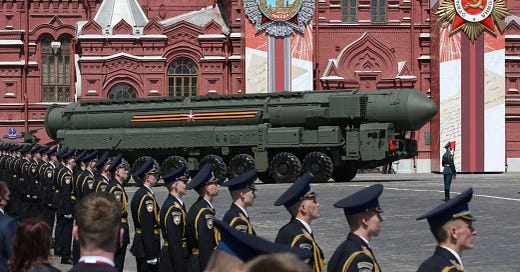





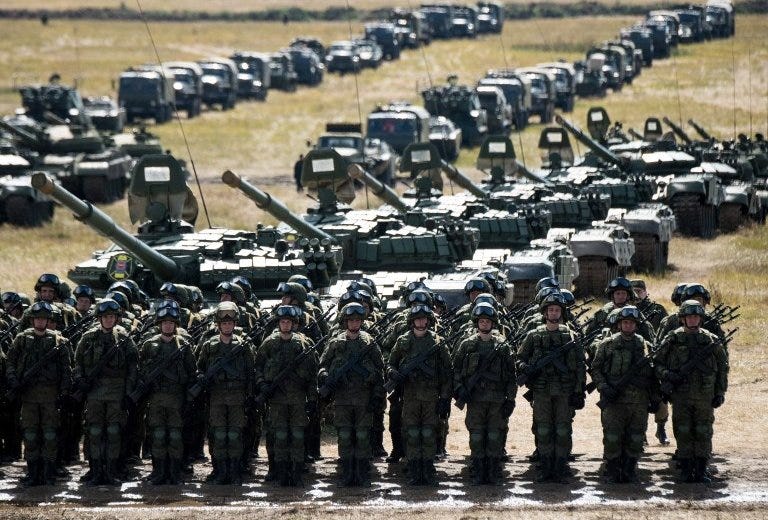
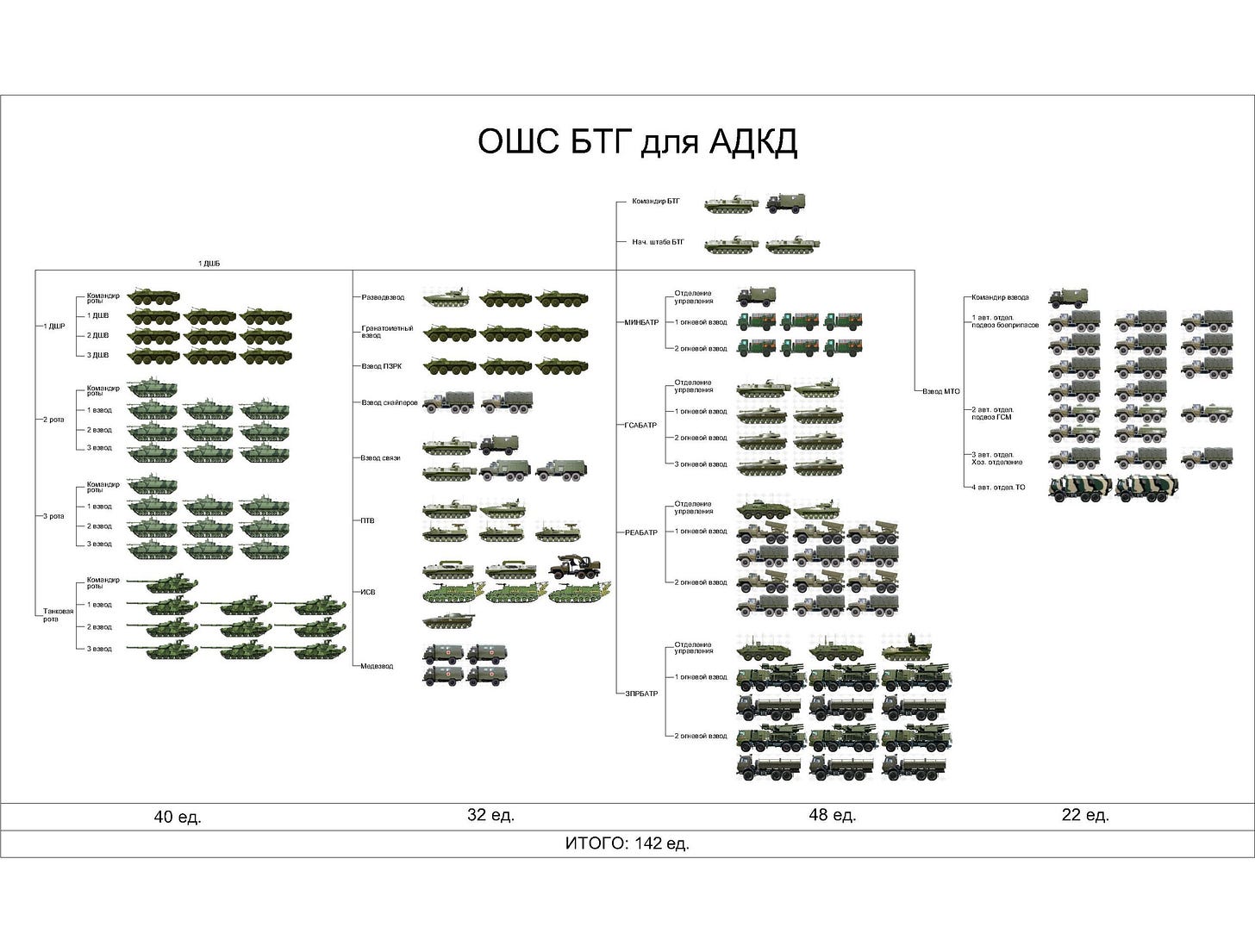
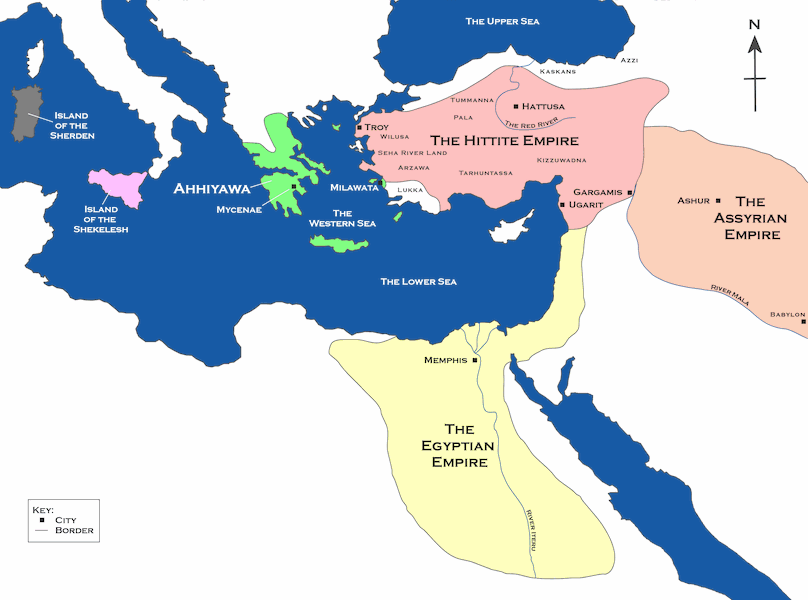
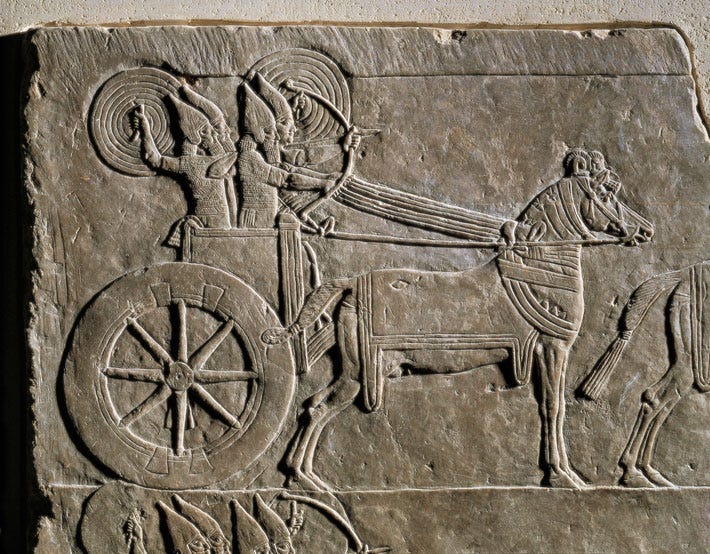

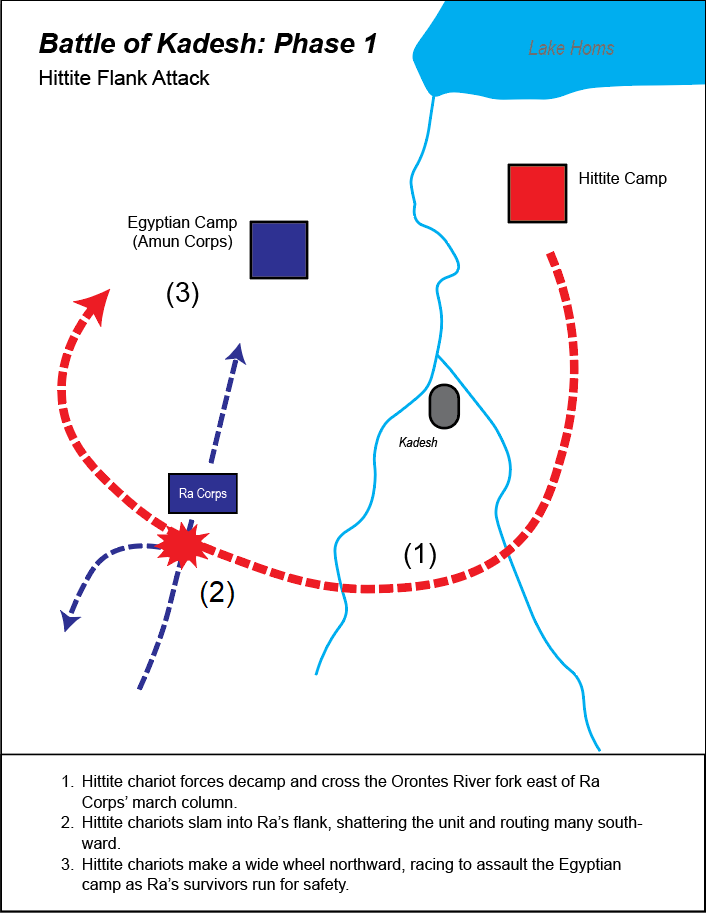

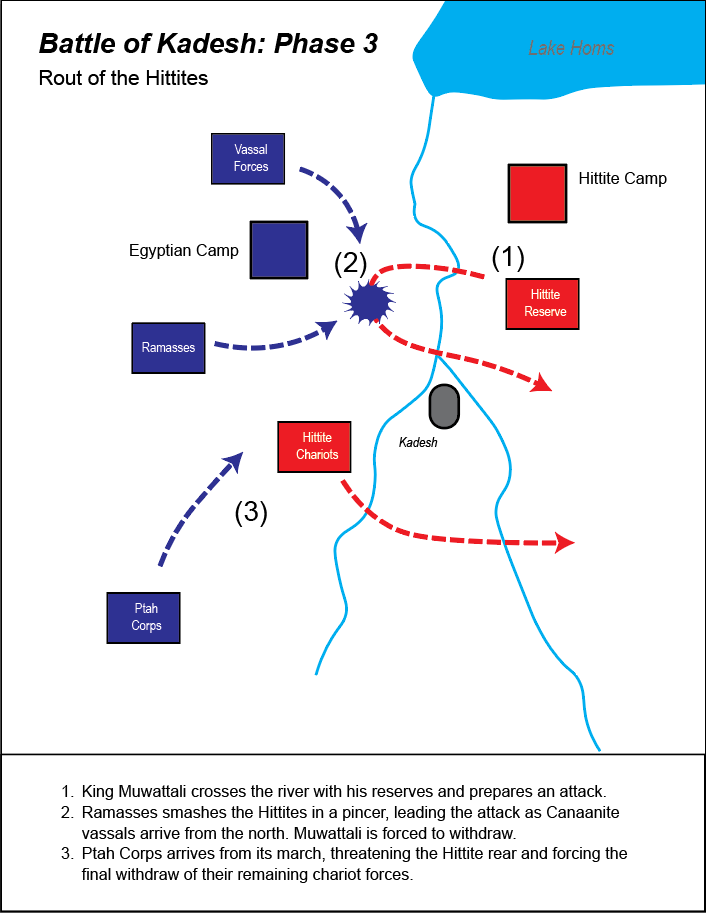
Better, in my opinion, to have divided this very informative post into 2 separate articles
In the meantime, the US has changed its nuclear doctrine, significantly lowering the threshold for a 1st strike, even against non-nuke countries, suggesting that our conventional weapons are depleted to the point that we can't expect to win a conventional war.
While mainstream cw has spread the unmerited fear of a 1st strike by Russia, in the US according to retired Cl MacGregor, recent talk of a "tactical nuke" has been "serious."
And Russia claims to have evidence of the dirty bomb plot, yet another crazy plan by M16 & the CIA. That is presumably what the recent kerfluffle was about when Ben Wallace made the emergency trip to the US for in person talks. Apparently Russia broke into their secret communications. Possibly linked to the "trawler accident" that left the Shetland Islands" sans comms.